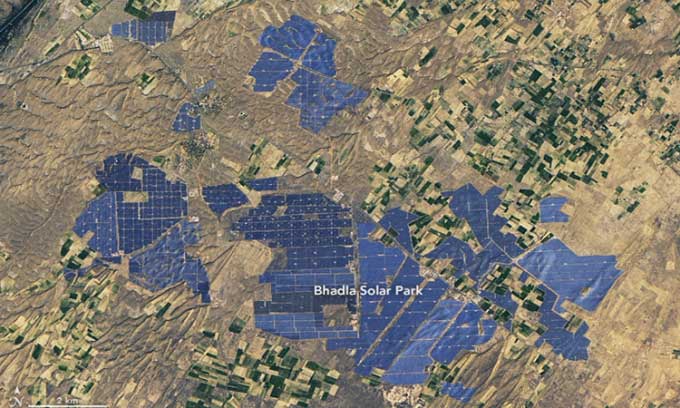Landsat 8 satellite captures images of a solar park spanning over 5,700 hectares in the Thar Desert, with a total capacity of 2,245 MW.
With high temperatures, barren land, limited water resources, and frequent dust storms, the town of Phalodi in the Thar Desert of India is an extremely harsh place to live. However, the abundance of open space and sunlight makes this remote area in western Rajasthan an ideal location for harnessing solar energy.

A section of the Bhadla Solar Park captured by Landsat 8 on January 26. (Photo: NASA Earth Observatory/Lauren Dauphin)
Bhadla Solar Park first appeared in satellite images in 2015. Today, millions of solar panels cover Phalodi, adding a metallic sheen to a landscape that was once only brown and sandy. The image taken in natural colors by Landsat 8 on January 26 shows the scale of Bhadla Solar Park from space.
Bhadla Solar Park spans over 5,700 hectares, approximately one-third the size of Washington D.C. The facility has a total capacity of 2,245 MW and is one of the largest solar parks in the world. The recent construction of this facility has helped Rajasthan surpass Karnataka to become the state with the largest installed solar power capacity in India.
The clear skies of the Thar Desert provide abundant sunlight, but the frequent dust storms pose technical challenges. They layer minerals and sand on the solar panels, hindering electricity production.
Some operators have chosen to deploy thousands of cleaning robots on the panels, a strategy aimed at reducing the need for labor and minimizing the amount of water required for cleaning. According to recent studies, satellite imagery can also assist in this task by helping companies determine dust accumulation and optimize cleaning operations.


















































